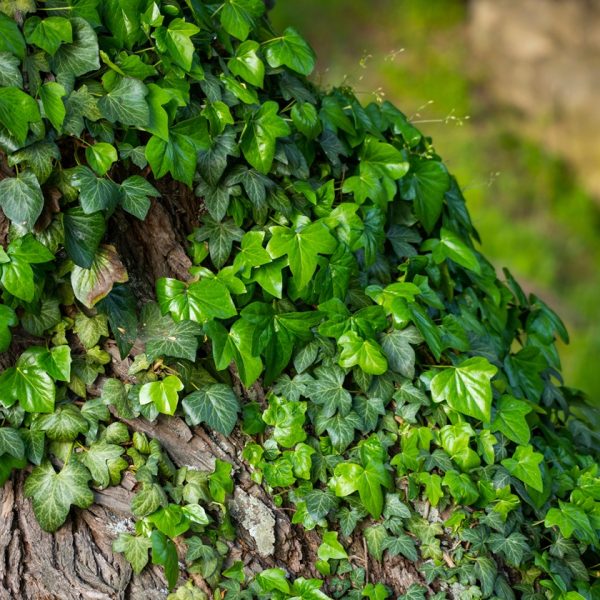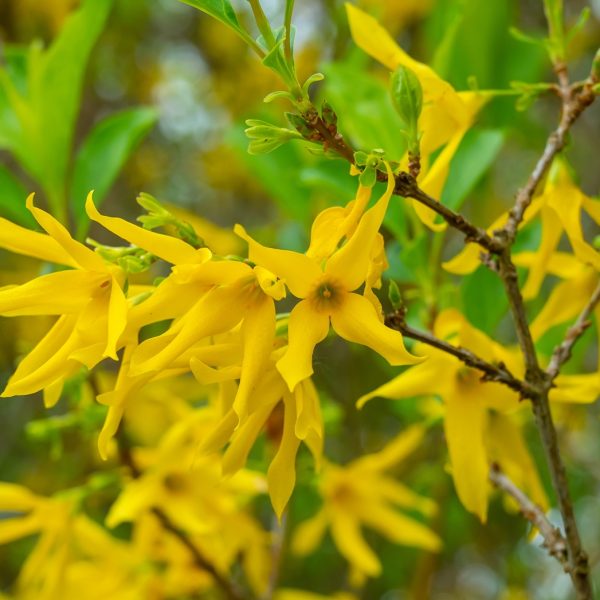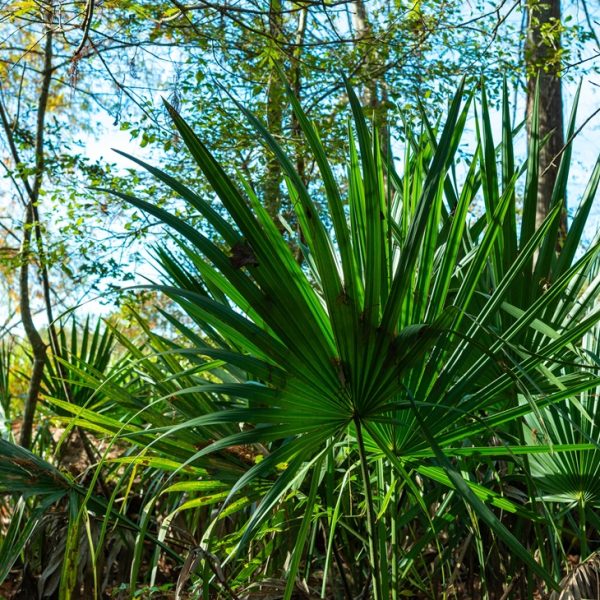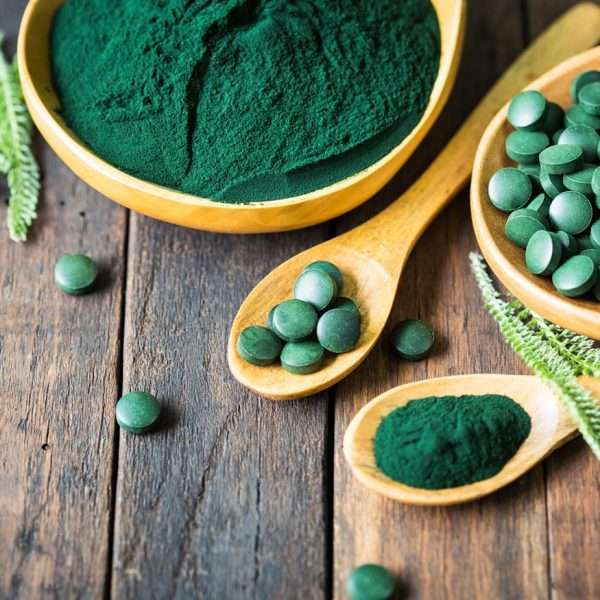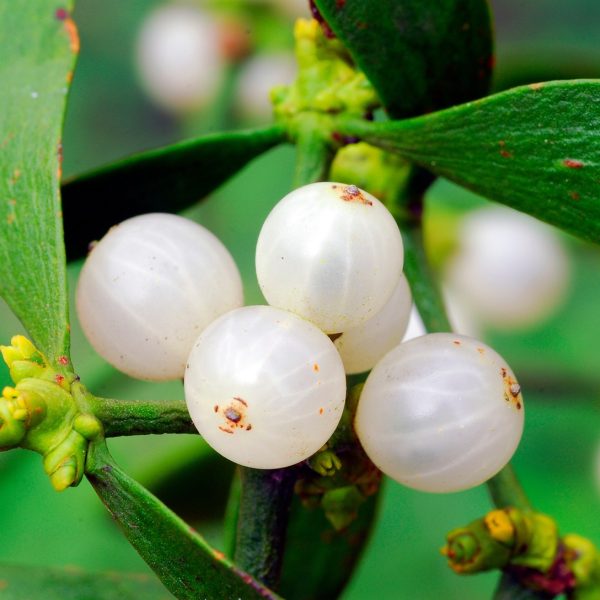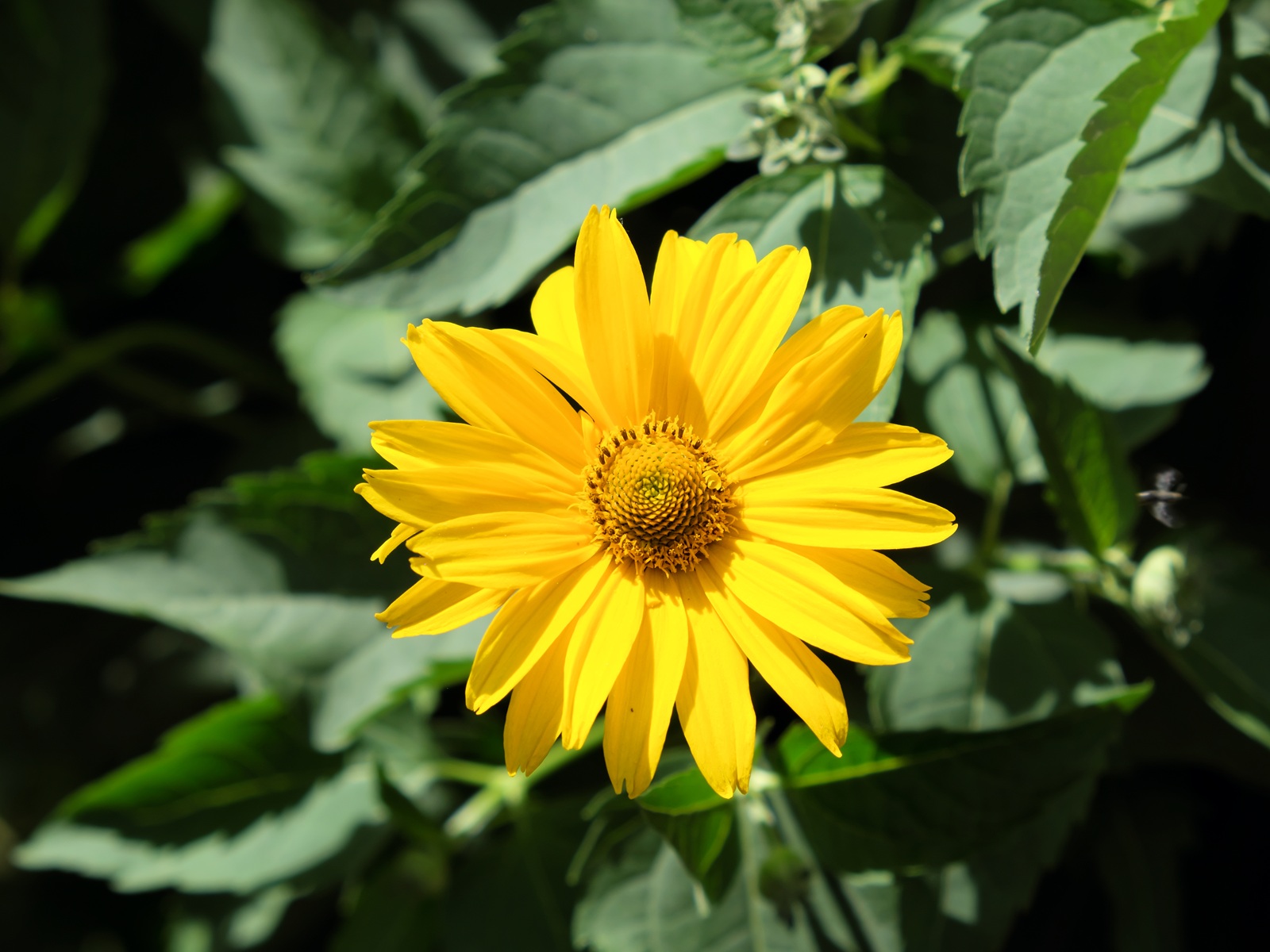-
How does it feel?
When the oil is applied externally the sensation is slightly cooling and mildly tingly, with an analgesic sensation on the skin.
Please note: Arnica is not suitable for internal use.
-
What can I use it for?

Arnica (Arnica montana L.) There are over thirty species in the Arnica genus, however it is Arnica montana (mountain arnica), which is used in herbal medicine (1). Despite its traditional indications as both an internal and external medicine, arnica is restricted to external use only, and at a limited concentration. Although fairly common in homeopathic and folk medicine, arnica is toxic and can cause fatal poisoning if taken internally (1). Even with external use there is a risk of skin irritation and allergic reaction, so caution is warranted with use.
Arnica is one of the first remedies to turn to for any muscle, joint and connective tissue injuries which are causing local inflammation, swelling and pain (2,3). It is recommended for inclusion in any first aid kit, and is largely used to treat bruises, sprains, oedema from fractures, rheumatic pain, joint aches, varicose veins, haemorrhoids, and inflamed insect bites (2,4). It works well as a cream, oil, salve, liniment or a tincture added to a bath or soak (3,5).
The German Commission E monograph approves the external use of arnica for haematoma (bleeding outside the blood vessels), dislocation, contusions (unbroken skin bruises), oedema due to a fracture, rheumatoid pains, myalgia (muscle pain), joint pain, oral and throat inflammations, boils, superficial phlebitis (inflamed veins), and inflamed insect bites (6).
-
Into the heart of arnica

Arnica (Arnica montana L.) Arnica has antimicrobial, anti-inflammatory, and analgesic activity when applied topically (7).
The antimicrobial activity is due to the sesquiterpenes, primarily helenalin which is both antibacterial against Listeria, Salmonella and Staphylococcus aureus, and fungicidal against several fungal strains (7). Helenalin has activity against malarial organisms and periodontal microbes (8).
The anti-inflammatory action is also attributed to the sesquiterpene lactones, particularly helenalin (7). Helenalin is a potent inhibitor of inflammation, by inhibiting prostaglandins and other pro-inflammatory activity (7,8). As part of a normal healing process these pro-inflammatory markers recruit white blood cells, and cause the capillary membranes to become leaky in order to migrate the immune cells to the area of injury (9). As a result, plasma builds up in the tissues around the blood vessels, causing heat, swelling, redness and pain (9). Arnica helps to reduce this inflammatory cascade which causes swelling and pain.
Volatile oils stimulate the tissue they come into contact with, creating a slight irritation (10). When arnica is applied to the skin the volatile oils create a mild irritation which causes local vasodilation of the blood vessels, drawing blood to the area. Arnica is largely used to treat bruises and sprains for this rubefacient (counter-irritant) action, bringing warmth to an area via the increased blood flow (1,10).
Arnica is considered to be both warming and drying, as it brings blood flow to the area applied, and helps to reduce inflammation and fluid stagnation (5).
In homeopathy, arnica is used to treat swelling, bruises, injuries, and after unaccustomed exertion to reduce pain and malaise (2,5). Homeopathic arnica is also supportive after a concussion, stroke, loss of consciousness, altered consciousness or serious infection (2). It is also used to treat epilepsy and seasickness (11).
As a flower essence, arnica is known as “the flower of recovery” (2). It is used to support healing from an injury or trauma by connecting the parts of the self that have been fragmented by the shock or trauma (2).
-
Traditional uses

Arnica (Arnica montana L.) During the medieval era arnica was used for haematomas, varicosities, phlebitis, gout, rheumatism, indigestion, wound healing and cardiovascular diseases (12). Arnica was included in the writings of St Hildegard of Bingen (1099–1179) as a healing herb for injuries, falls, accidents and trauma of all kinds (2). Native Americans used arnica for trauma, fever, meningitis, exhaustion and to support the nervous system (13). Arnica appeared in 17th Century European pharmacopoeias as a remedy for angina, heart disease, fevers, paralytic affections, slow healing wounds, leg ulcers, and as a gargle for sore throats and pharyngitis (8).
The King’s American dispensatory (1898) stated that the whole plant was used as medicine, in preparations as: an “extract of arnica root; a fluid extract of arnica root; tincture of arnica flowers; tincture of arnica root; or an arnica plaster” (14). Externally it was used
“in the form of an infusion, a fomentation, or diluted tincture of the flowers, for local inflammations, to remove ecchymosis [bruise]… for the bites of mosquitoes and other insects.. and as a dressing for cuts, lacerations, and contusions” (14).
It was noted that the local application of arnica is an irritant, with the preparations of the flowers being most powerful (14). It was recommended that preparations should not be applied full strength, and an infusion was preferable for this purpose (14). Caution was suggested on tender skin, with a risk of bruising, dangerous inflammation and vesication (blistering) (14). External uses listed were:
“muscular soreness and pain from strains or over-exertion; impaired spinal innervation; muscular pain and soreness when the limbs are moved; tensive backache, as if bruised or strained; hematuria, with dull, aching lumbar pain, or from over-exertion” (14).
Arnica was recommended internally, in small doses, and two fluid ounces (~50 ml) of the tincture was sufficient to cause death (14). Overdose was reported to cause an accelerated pulse, increased perspiration, increased urination, headache, giddiness as well as
“heat in the throat, nausea, vomiting, purging, spasmodic contractions of the limbs, difficulty of respiration, inflammation of the alimentary canal, and coma…with no known antidote to its poisonous influences” (14).
It was used in typhoid fever and other febrile diseases such as intermittent fever, chronic palsy, as a tonic in chronic rheumatism, and as a tonic and diuretic for dropsy (oedema) (14). It was considered highly efficacious in constitutional derangements caused by powerful shocks to the brain, from thumps or kicks, and for internal pains, and congestions from bruises (14). As a stimulant to the spinal nerves, arnica was used in conditions calling for spinal innervation such as advanced stages of diseases with feeble respiratory power, sleeplessness from poor respiration, and a neural lack of control over the bowel and bladder (14). As well as the external application for rheumatism, it was used internally to “arouse nervous action and stimulates excretion”, as well use for all forms of myalgia, muscular soreness, and pain from strains, over-exertion, or injuries (14).
More recently, Grieve (1932) recommended against the use internally due to the irritant effect on the stomach, and cautioned repeated applications externally due to the risk of severe inflammation (11). She suggested external application on unbroken skin for sprains, bruises, wounds, chilblains, to stimulate hair growth on the scalp, and as a foot bath for “tender feet” (11).
It should be noted that arnica is no longer recommended for internal use.
-
Traditional actions
Herbal actions describe therapeutic changes that occur in the body in response to taking a herb. These actions are used to express how a herb physiologically influences cells, tissues, organs or systems. Clinical observations are traditionally what have defined these actions: an increase in urine output, diuretic; improved wound healing, vulnerary; or a reduction in fever, antipyretic. These descriptors too have become a means to group herbs by their effects on the body — herbs with a nervine action have become the nervines, herbs with a bitter action are the bitters. Recognising herbs as members of these groups provides a preliminary familiarity with their mechanisms from which to then develop an understanding of their affinities and nuance and discern their clinical significance.
-
Traditional energetic actions
Herbal energetics are the descriptions Herbalists have given to plants, mushrooms, lichens, foods, and some minerals based on the direct experience of how they taste, feel, and work in the body. All traditional health systems use these principles to explain how the environment we live in and absorb, impacts our health. Find out more about traditional energetic actions in our article “An introduction to herbal energetics“.
Western energetics
-
What practitioners say

Arnica (Arnica montana L.) The topical application of arnica, often combined with other herbs into a balm or cream, is an effective treatment for arthritic pain, soft tissue injuries, bruises, sore muscles after exercise, oedema due to fractures and post-surgery to support oedema, pain and inflammation. Topical applications are often given alongside other internal remedies to support the presenting condition.
Musculoskeletal
Arnica is applied locally to reduce inflammation and swelling, and works well in the treatment of rheumatic pain, sprains, myalgia and fractures (2). Including arnica in a cream or balm for osteoarthritis is particularly effective, due to the specific anti-inflammatory pathways arnica inhibits (4). Arnica gel has been demonstrated in clinical research to be comparable to ibuprofen when treating osteoarthritis in the hands, improving both pain and joint function (15). Another similar clinical study found topical application of arnica gel to effectively treat osteoarthritis of the knee (16).
When making a cream or ointment for muscle pain, arnica combines well with comfrey (Symphytum officinale), St John’s wort (Hypericum perforatum), wintergreen (Gaultheria procumbens), and chilli (Capsicum spp.).
Pain
Arnica helps to reduce pain that is caused by inflammation and swelling. The constituents in arnica inhibit the proinflammatory cascades that cause inflammation, and help to clear the congestion causing the pain (9). Following a concussion, applying a compress around the head and neck can relieve headaches and visual disturbances (13). Following dental surgery, topical application of arnica to the jaw line has been shown to decreased pain and trismus (restricted mouth opening), compared with standard therapy alone (17).
Skin
Arnica is one of the best remedies for local healing, used on unbroken skin to reduce local inflammation, swelling and pain caused by bruises (2,10). This can reduce the risk of complications from these injuries (2). Clinical evidence supports the use of topical arnica to effectively reduce bruising (18). Arnica can be used to reduce the pain and inflammation of the lymphatic vessels (lymphedema) and superficial veins (phlebitis, varicose veins and haemorrhoids), as long as the skin is not broken (4,10,13).
Immune system
Arnica has immune system suppressive actions as an anti-inflammatory, yett it is also an immunostimulant, by stimulating phagocytosis (10). Phagocytosis is an important part of the immune system response to infections, where white blood cells (phagocytes) engulf particles such as bacteria or debris to break down and remove them from the body. Fischer-Rizzi recommends gargling with diluted arnica tincture for soothing and supporting recovery from tonsillitis and laryngitis (13). The therapeutic action of this will be the local anti-inflammatory, antimicrobial and analgesic action on the tissues, as well as the immune stimulation needed to clear the infection.
Arnica can also be used as a mouth rinse for periodontal diseases, due to the antimicrobial activity against oral pathogens and periodontopathic bacteria (19). For gingivitis, tooth infections and periodontitis, tinctures of arnica, calendula (Calendula officinalis), myrrh (Commiphora myrrha/ molmol), propolis and clove (Syzygium aromaticum) combine well as a mouth rinse. When using arnica as a gargle or mouth wash, care must be taken not to swallow the tincture after gargling. High alcohol tinctures also need to be diluted in water to prevent damage to the oral mucosa. In individuals with sensitive skin or who have an allergic reaction to arnica, comfrey and calendula offer many of the same benefits and make suitable alternative herbs.
-
Research

Arnica (Arnica montana L.) Osteoarthritis
A randomised, double-blind study was conducted with 204 patients with active osteoarthritis of the interphalangeal joints of hands. The study compared ibuprofen gel (5%) and arnica gel (50 g per 100 g, of a 1:20 fresh extract tincture). After 21 days treatment there were no differences between the two groups in pain and hand function improvements. This confirmed that arnica gel has comparable effects to ibuprofen when treating osteoarthritis of hands. Adverse events were reported by six patients (6.1%) taking ibuprofen and by five patients (4.8%) taking arnica (15). A Cochrane review of topical herbal therapies for treating osteoarthritis concluded that this study provides moderate evidence that arnica improves pain and function to the same degree as non‐steroidal anti‐inflammatory drugs (20).
A pre-test, post-test multicentre trial, investigated the safety and efficacy of an Arnica montana gel, containing 50 g per 100 g, of a 1:20 fresh extract tincture. The gel was applied twice daily to 26 men and 53 women with mild to moderate osteoarthritis (OA) of the knee. After three and six weeks there was a significant decrease in pain, stiffness, and function, assessed by the Western Ontario and McMaster Universities Osteoarthritis Index (WOMAC) scale. The overall adverse-event rate of 7.6% included only one allergic reaction. It was concluded that six weeks topical application of arnica gel was a safe, well-tolerated, and effective treatment of mild to moderate OA of the knee (16).
Bruising
A double blind, randomized controlled trial was conducted on healthy volunteers, aged 21–65 years. Each participant had laser-induced bruises of 7 mm diameter, treated topically with either: 20% arnica; 5% vitamin K; 1% vitamin K and 0·3% retinol; or white petrolatum. Treatment was twice a day for two weeks, and the bruises were rated with a visual analogue scale immediately after bruise creation and at week two. The improvement with the arnica was greater than the petrolatum (P =0·003), and the vitamin K and retinol (P =0·01), and was comparable to the vitamin K cream. It was concluded that topical 20% arnica ointment is effective at reducing bruising (18).
Ankle sprain
A randomized, double-blind study involved 570 patients with acute ankle joint distortion (ankle sprain), divided the into four groups: arnica tincture (10 g per 100 ml); hydroxyethyl salicylate (HES); combination arnica and HES; and placebo. The sprays were applied four times per day for ten days. Pain improvement in the group receiving a combination spray of arnica and HES was significantly greater than the other groups, with no difference in ankle swelling between interventions (22).
Exercise recovery
A randomized counterbalanced crossover study of ten resistance-trained men, compare the effects of a mud pack, containing menthol (5%) and arnica (3%), on recovery following high-volume resistance training. Following the mud pack application, the athletes had an enhanced recovery rate and reduced muscle soreness after high-volume exercise (22).
A double-blind, randomized placebo-controlled trial explored the effect of topical arnica on pain, inflammation, muscle damage, and performance in 20 males experiencing delayed onset muscle soreness (DOMS). Immediately after intense eccentric exercise and every four hours for 96 hours arnica or a placebo was applied to the upper and lower legs (quadriceps and gastrocnemius muscles). At 4, 24, 48, 72 and 96 hours, arnica did not have an effect on performance, inflammation, or blood markers of muscle damage, however pain was reduced at 72 hours compared to the control (23).
Dentistry
A randomised controlled clinical trial of 60 patients underwent dental surgery to remove impacted mandibular third molars and received standard therapy consisting of antibiotics and nonsteroidal anti-inflammatory drugs for five days. The patients were divided into three groups to determine the effect of arnica in addition to the standard therapy: control (standard therapy), arnica (445 mg/100 g), and Mucopolysaccharide polysulfate (MPSP). The arnica and MPSP cream was applied to the skin along the jawline on the face, every eight hours for 10 days. Topical application of arnica significantly decreased pain and trismus (restricted mouth opening), but not oedema, on days 1–5 post-surgery, compared with standard therapy alone (17).
-
Did you know?
The name “arnica” is derived from the Greek word “ptarmikos” meaning sneezing, as one sniff of arnica can make you sneeze (24). Wolfsbane, one of the common names, refers to the wild and dangerous nature of arnica, and the flowers are like wolf’s eyes (13).
Additional information
-
Botanical description
Arnica is a plant genus of over 30 species in the Asteraceae family, which are all perennial plants growing to 10–70 cm (4–28 inches) tall (1). Of the many species in the Arnica genus, it is Arnica montana (mountain arnica), which is used in herbal medicine (1). Arnica montana is a perennial plant that flowers from June to July and prefers acid and poor soils. It is mainly found in grassland and shrubland and alpine mountain environments (30).
Arnica is a clump-forming perennial, with broadly oval leaves up to 15 cm long in a flat rosette in spring and summer (11,31). From the centre of the leaf rosette rises a flower stalk, which in summer produces deep yellow or orange-yellow flowers, 5–8 cm across (11,31). The flower consists of 50–90 tubular disk florets in the centre, framed by a ring of ray floret petals (13). The plant spreads by seed dispersal and by the creeping rhizomes (8).
-
Common names
- Mountain tobacco
- Leopard’s bane
- Wolfsbane
- Common arnica
- Mountain arnica
- Mountain daisy
-
Safety
Arnica should not be taken internally, except in suitable homeopathic dilutions, due to the toxic effects on the liver and kidneys (7,25). If taken internally, arnica is an irritant to mucous membranes, and ingestion may result in fatal gastroenteritis, muscle paralysis (voluntary and cardiac), erratic pulse rate, heart palpitations, shortness of breath, and can lead to death (7). As little as 30 ml of a 20% arnica tincture, taken by mouth, can produce serious, but not fatal, symptoms (7).
Prolonged external use can cause oedematous dermatitis with the formation of pustules, and give rise to allergic dermatitis (eczema) (6).
Do not use during pregnancy due to uterine stimulation and possible abortifacient effect, with miscarriage being reported following ingestion of arnica tincture and infusion (4,25). Do not apply topically near the nipple when breastfeeding breast-feeding, due to the potential toxicity to the infant (25).
-
Interactions
Theoretically, arnica might have additive effects with anticoagulant and antiplatelet drugs, however insufficient absorption is likely from topical applications at the recommended dosages (26).
-
Contraindications
Arnica should not be applied externally without being diluted — see dosage recommendations. Arnica is poorly tolerated by some people, and should not be applied to sensitive skin due to the risk of contact dermatitis from the sesquiterpene lactones (7,25, 27). Arnica should not be applied to broken skin (25).
Avoid prolonged external use as this can lead to allergic dermatitis (25,27).
You can find qualified medical herbal professionals on our page Where to find a herbalist.
-
Preparations
Recommendations are for external use only, on unbroken skin.
- Ointment
- Cream
- Gel
- Compress
- Poultice
- Mouthwash
Arnica is approved for use in commercially available herbal medicine products, for external use only (28). Atrogel contains 0.5% arnica and has a traditional herbal medicine product registration for application to the symptomatic relief of muscular aches, pains and stiffness, sprains and bruising.
-
Dosage
Recommendations are for external use only.
Tincture: 2–4 ml per day, 1:10, 45%, for external application only (7,8).
Topical:
- For ointments, creams, lotion, gels and oil, the final product should contain no more than 10% arnica (7).
- Compresses made with 5–25% tinctures, diluted to 1:10 (7).
- Arnica oil: Extract of one part herb and five parts fatty oil (6).
- Poultice: 2–3g arnica flowers in 150 ml boiling water for 10 minutes, strain and soak bandages or cotton pads to apply to the affected area (4).
- Mouthwash: Dilute the tincture five times with water (4). Commission E recommends a ten times dilution (6).
-
Plant parts used
Flower heads
-
Constituents
- Sesquiterpene lactones (0.2–1.5%): Helenalin, arnifolin, arnicolides, acetic acid, isobutyric acid, methacrylic acid, tiglic acid (4,7,10)
- Diterpenes: Bitter principle (arnicin) (7,10)
- Triterpenes: Arnidiol (4)
- Volatile oils (~0.3%, up to 1%): Containing thymol and thymol derivatives, faradiol, maniladiol, calenduladiol (4,7,8)
- Flavonoids (0.4–0.6%): Quercetin, betuletol, eupafolin, flavonol glucuronides, hispidulin, isorhamnetin, kaempferol, laciniatin, luteolin, patuletin, spinacetin, tricin, trimethoxyflavone (7,29)
- Alkaloids: Tussilagine and isotussilagine (trace) (7)
- Amines: Betaine, choline, trimethylamine (7)
- Carbohydrates: Mucilage, polysaccharides including inulin (7)
- Coumarins: Scopoletin and umbelliferone (7)
- Other constituents: Amino acid, caffeic acid, carotenoids, fatty acids, phytosterols, polyacetylenes, resin, tannin (7)

-
Habitat
Many species in the Arnica genus grow in the mountains of North America (1). Arnica montana, is a perennial herb, native to northern and central Europe and Greenland, grows primarily in the temperate biome (1,32). Arnica grows mainly in acidic and nutrient poor grasslands and shrublands and prefers part-shade to full-sun, sandy soil and does best in meadows and conifer forests (30,33).
Arnica also grows in dry pine forests, meadows, grazed moors on siliceous soils, marginal parts of spruce forests, open forest edges, mowing pastures, road and path sides, margins of peatlands. It can be found in coastal heathland and benefits from occasional burning of heathlands (30).
-
Sustainability
 Arnica montana is not listed by the Convention on International Trade in Endangered Species of Wild Fauna and Flora (34), therefore trade in specimens of these species is permitted (34).
Arnica montana is not listed by the Convention on International Trade in Endangered Species of Wild Fauna and Flora (34), therefore trade in specimens of these species is permitted (34).United Plant Savers lists arnica as “in review” due to specific species being endangered (33). This does not include Arnica montana, and refers to A. acaulis, A. angustifolia, A. chamissonis, A. cordifolia, A. fulgens, A. latifolia, and A. sororia. Common leopardbane (A. acaulis) is “Endangered” in Florida, Maryland, and Pennsylvania; and heartleaf arnica (A. cordifolia) is “Endangered” in Michigan (33). It is important when purchasing arnica to ensure it is either cultivated or a wild-harvested species that is not listed as being at-risk (33).
The International Union for Conservation of Nature (IUCN) have globally assessed Arnica montana and list it as least concern (30). However, the population trend is declining, partly due to collection of the plant for medicinal purposes and partly due to habitat loss (30).
We would always recommend finding analogue herbs; alternative herbs that have stable wild populations that offer comparable therapeutic effects. For arnica, common daisy (Bellis perennis) is a herb that grows in abundance in the UK that may be used as a substitute.
Habitat loss and over-harvesting from the wild are two of the biggest threats faced by medicinal plant species. There are an increasing number of well-known herbal medicines at risk of extinction. We must, therefore, ensure that we source our medicines with sustainability in mind.
The herb supplement industry is growing at a rapid rate and until recent years a vast majority of medicinal plant produce in global trade was of unknown origin. There are some very real and urgent issues surrounding sustainability in the herb industry. These include environmental factors that affect the medicinal viability of herbs, the safety of the habitats that they are taken from, as well as the welfare of workers in the trade.
The botanical supply chain efforts for improved visibility (transparency and traceability) into verifiably sustainable production sites around the world is now certificated through the emergence of credible international voluntary sustainability standards (VSS).
Read our article on Herbal quality and safety: What to know before you buy and Sustainable sourcing of herbs to learn more about what to look for and questions to ask suppliers about sustainability.
-
Quality control
Herbal medicines are often very safe to take; however, their safety and efficacy can be jeopardised by quality issues. So, it is important to buy herbal medicines from a reputable supplier, from sources known to test their herbs to ensure there is no contamination, adulteration or substitution with incorrect plant matter, as well as ensuring that recognised marker compounds are at appropriate levels in the herbs.
Some important quality assurances to look for are certified organic labelling, the correct scientific/botanical name, and the availability of information from the supplier about ingredient origins. A supplier should be able to tell you where the herbs have come from, what contaminants are not in the herb, and what the primary compounds are.
-
How to grow
Propagation is best by seed sown in a cold frame in autumn, or, by division in spring (24). It thrives in moist but well-drained, humus-rich, acidic soil, in a sunny position (13,31). Arnica is very pollinator-friendly and attracts many species of bees, butterflies, moths, and other insects (33). Arnica plants produce many small seeds that are wind-dispersed at the end of summer and beginning of Autumn (33).
-
Recipe

Arnica (Arnica montana L.) Achy muscle rub
Ingredients
- 30 ml arnica infused oil
- 50 ml comfrey infused oil
- 20 ml St John’s wort infused oil
- 20 drops wintergreen essential oil
- 10 g beeswax
Method
- Combine all the oils and beeswax in a bain-marie or double boiler.
- Gently heat until the beeswax has melted.
- Remove from the heat and stir in the wintergreen essential oil.
- Pour into glass jars.
- Allow to cool before adding the lid.
- Apply to aching muscles or joints twice per day.
Seaweed and arnica bath infusion*
This blend of herbs and oils will relax tired muscles and soothe inflamed tissues.
Ingredients
- 1 tsp bladderwrack
- 1 tsp dried comfrey leaf
- 2 tsp juniper berries
- 2 tsp sea salt
- 5 drops arnica tincture
- 2 drops pine oil
- 2 drops lavender essential oil
- 2 drops juniper essential oil
Method
- Make an infusion of the herbs in 500 ml of boiled water. Leave to steep for 10–15 minutes before straining.
- Add the infusion and rest of the ingredients to a freshly run bath.
- Lie back, relax and enjoy.
* Adapted from: Steel (2011). Neal’s Yard Remedies: cook, brew, and blend your own herbs (3).
-
References
- Petruzzello, M. Arnica plant. Britannica. Accessed December 10, 2024. https://www.britannica.com/topic/herbal
- McIntyre A. Flower Power: flower remedies for healing body and soul through herbalism, homoeopathy, aromatherapy, and flower essences. Henry Holt; 1996.
- Steel, S. Neal’s Yard Remedies: cook, brew, and blend your own herbs. Dorling Kindersley Limited. 2011.
- Bone K and Mills S. Principles and Practice of Phytotherapy: Modern Herbal Medicine. Elsevier Health Sciences; 2013.
- Easley T, Horne S. The Modern Herbal Dispensatory: A Medicine-Making Guide. North Atlantic Books; 2016.
- Blumenthal M, Busse WR. Arnica Flower. In: The Complete German Commission E Monographs: Therapeutic Guide to Herbal Medicines. American Botanical Council; 1999. Accessed December 17, 2024. https://www.herbalgram.org/resources/commission-e-monographs/monograph-approved-herbs/arnica-flower/
- Barnes, J., Anderson, L.A. and Phillipson, J.D. Herbal medicines: a guide for healthcare professionals: Third Edition. Pharmaceutical press; 2007.
- Fisher C. Materia Medica of Western Herbs. Aeon Books; 2018.
- Waddell, G. Plant Medicine: A collection of the teachings of herbalists Christopher Hedley and Non Shaw. Aeon; 2023.
- Hoffmann D. Medicinal Herbalism, The Science and Practice of Herbal Medicine. Healing Arts Press; 2003.
- Grieve M, Leyel CF, Marshall M. A Modern Herbal. the Medicinal, Culinary, Cosmetic and Economic Properties, Cultivation and Folk-Lore of Herbs, Grasses, Fungi, Shrubs & Trees with All Their Modern Scientific Uses [1932]. Tiger Books International; 1982.
- Thomsen M. The Phytotherapy Desk Reference: 6th Edition. 6th ed. Aeon Books; 2022.
- Fischer-Rizzi, S. Complete Earth Medicine Handbook. Sterling Publishing; 1996.
- Felter H. W, Lloyd J. U. Kings American Dispensary; 18th Edit; 1898. Reprinted on Henritttas Herbpages. Accessed December 10, 2024. https://www.henriettes-herb.com/eclectic/kings/arnica.html
- Widrig R, Suter A, Saller R, Melzer J. Choosing between NSAID and arnica for topical treatment of hand osteoarthritis in a randomised, double-blind study. Rheumatology International. 2007;27:585-91. https://doi.org/10.1007/s00296-007-0304-y
- Knuesel O, Weber M, Suter A. Arnica montana gel in osteoarthritis of the knee: an open, multicenter clinical trial. Advances in therapy. 2002;19:209-18. https://doi.org/10.1007/BF02850361
- Akay N, Şanal KO. Can Topical Agents (Arnica and Mucopolysaccharide Polysulfate) Reduce Postoperative Pain, Edema and Trismus Following Mandibular Third Molar Surgery?. Journal of Oral and Maxillofacial Surgery. 2024;82(1):113-21. https://doi.org/10.1016/j.joms.2023.10.003
- Leu S, Havey J, White LE, Martin N, Yoo SS, Rademaker AW, Alam M. Accelerated resolution of laser‐induced bruising with topical 20% Arnica: a rater‐blinded randomized controlled trial. British Journal of Dermatology. 2010;163(3):557-63. https://doi.org/10.1111/j.1365-2133.2010.09813.x
- Iauk L, Lo Bue AM, Milazzo I, Rapisarda A, Blandino G. Antibacterial activity of medicinal plant extracts against periodontopathic bacteria. Phytotherapy research. 2003;17(6):599-604. https://doi.org/10.1002/ptr.1188
- Cameron M, Chrubasik S. Topical herbal therapies for treating osteoarthritis. Cochrane Database of Systematic Reviews. 2013;5. https://doi.org/10.1002/14651858.CD010538
- Kučera M, Kolar P, Barna M, Kučera A, Hladiková M. Arnica/Hydroxyethyl salicylate combination spray for ankle distortion: a four‐arm randomised double‐blind study. Pain research and treatment. 2011;2011(1):365625. https://doi.org/10.1155/2011/365625
- Bartolomei S, Nigro F, D’Amico A, Cortesi M, Di Michele R. Mud Pack with Menthol and Arnica Montana Accelerates Recovery Following a High-Volume Resistance Training Session for Lower Body in Trained Men. The Journal of Strength & Conditioning Research. 2022;36(7):1909-15. https://journals.lww.com/nsca-jscr/fulltext/2022/07000/mud_pack_with_menthol_and_arnica_montana.21.aspx
- Pumpa KL, Fallon KE, Bensoussan A, Papalia S. The effects of topical Arnica on performance, pain and muscle damage after intense eccentric exercise. European journal of sport science. 2014;14(3):294-300. https://doi.org/10.1080/17461391.2013.829126
- McVicar, J. Jekka’s Complete Herb Book. Kyle Cathie Limited; 2009.
- Brinker, FJ. Herbal Contraindications & Drug Interactions: Plus Herbal Adjuncts with Medicines. Eclectic Medical Publications, 2010.
- Natural Medicines Professional Database (NatMed). Therapeutic Research Centre. Arnica Professional Monograph. Published December 11, 2023. Accessed December 17, 2024. https://naturalmedicines.therapeuticresearch.com/
- Pengelly A. The constituents of medicinal plants: an introduction to the chemistry and therapeutics of herbal medicine. CABI Publishing; 2004.
- European Committee on Herbal Medicine Products (HMPC). Eucalypti folium (Eucalyptus leaf)- herbal medicinal product: European Medicines Agency. Accessed: 16 December, 2024. https://www.ema.europa.eu/en/medicines/herbal/arnicae-flos
- Heinrich, M., Barnes, J., Prieto-Garcia, J., Gibbons, S. and Williamson, E.M. Fundamentals of Pharmacognosy and Phytotherapy. Third Edition. Elsevier Health Sciences; 2018.
- Falniowski, A., Bazos, I., Hodálová, I., Lansdown, R. & Petrova, A. IUCN red list of threatened species: Arnica montana. IUCN 2011. Date Assessed June 22, 2010. Accessed December 10, 2024. https://dx.doi.org/10.2305/IUCN.UK.2011-1.RLTS.T162327A5574104.en.
- Royal Botanical Gardens Kew (RBGK). Arnica montana L. Plants of the Word Online (POWO). Accessed December 10, 2024. https://powo.science.kew.org/taxon/urn:lsid:ipni.org:names:30090722-2
- Royal Horticultural Society. Arnica montana. Accessed December 10, 2024. https://www.rhs.org.uk/plants/1608/arnica-montana/details
- UpS list of herbs & analogs. Arnica Spp. United Plant Savers. Published May 14, 2021. Accessed December 10, 2024. https://unitedplantsavers.org/species-at-risk-list/arnica-arnica-spp/
- Convention on International Trade in Endangered Species of Wild Fauna and Flora (CITES). Accessed December, 10, 2024. https://checklist.cites.org/#/en
- NatureServe explorer 2.0. Natureserve.org. Accessed December 10, 2024. https://explorer.natureserve.org/Search

